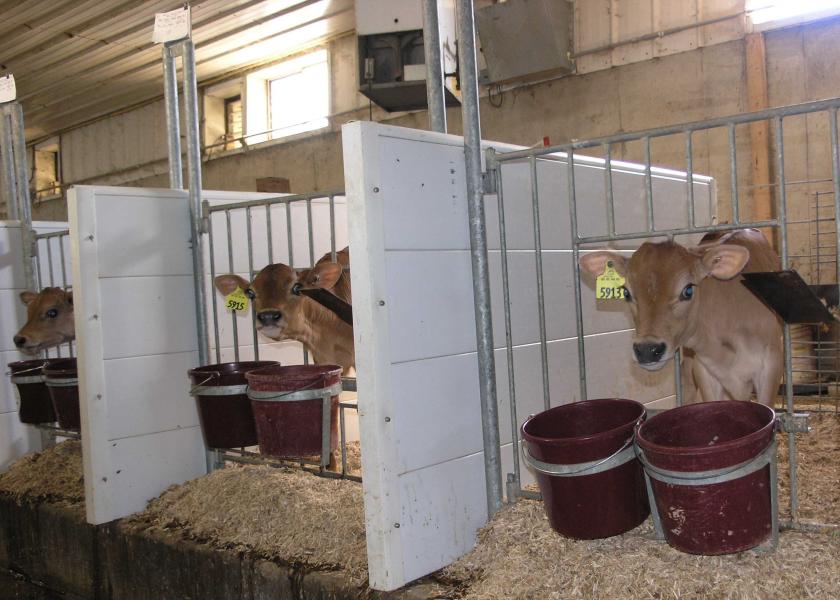Antibiotics in Calf Milk Rations Studied

Utilizing milk that must be discarded from antibiotic-treated cows as calf feed has long been an efficient way to utilize a waste product and provide an excellent nutrition source to herd replacements.
It also has been a common belief that the antibiotics present in the milk serve as a growth-promoting factor preweaned calves. Yet, conversely, concerns have been raised that traces of antibiotics may disturb the microbial gut flora and interfere with normal rumen development in young calves.
A group of researchers at the China Agricultural University in Beijing, China, recently explored these issues. Their study, published in the Journal of Dairy Science, evaluated the effects of antibiotic residues in milk on growth, ruminal fermentation, and microbial community of dairy calves in their first 35 days of age.
Twenty newborn Holstein calves were enrolled in the study, and assigned to two groups:
- Milk replacer without antibiotics (control); and
- Milk replacer, plus low levels of four antibiotics – penicillin, streptomycin, tetracycline, and ceftiofur.
Throughout the study period, all animals regularly were evaluated for starter intake, fecal consistency scores, and several growth factors. Rumen fluid also was regularly collected and evaluated, and rumen tissue from some animals in each group also was gathered and examined at the conclusion of the trial.
The study produced the following results:
- Calves in both groups had similar starter intake, body weight, withers height, body length, heart girth and average daily gain. Thus, antibiotic residues had no significant impact on the growth of calves.
- The antibiotic group showed a lower diarrhea frequency at week 4; no difference was found in any other weeks.
- Calves in the antibiotic group showed a greater concentration of acetic acid in the rumen, and no differences for other volatile fatty acids, total volatile fatty acids, rumen pH, or ammoniacal nitrogen.
- The length of the rumen papillae from the rumen cranial ventral sacs of the antibiotic group were longer than those of the control group.
- Antibiotics had only minor effects on the rumen microbial flora of calves.
The researchers concluded that antibiotics stimulated the development of rumen papillae and increased the production of acetic acid in the rumen. Antibiotics did not serve as a growth promoter in calves, but also were not deemed harmful to their overall development.







